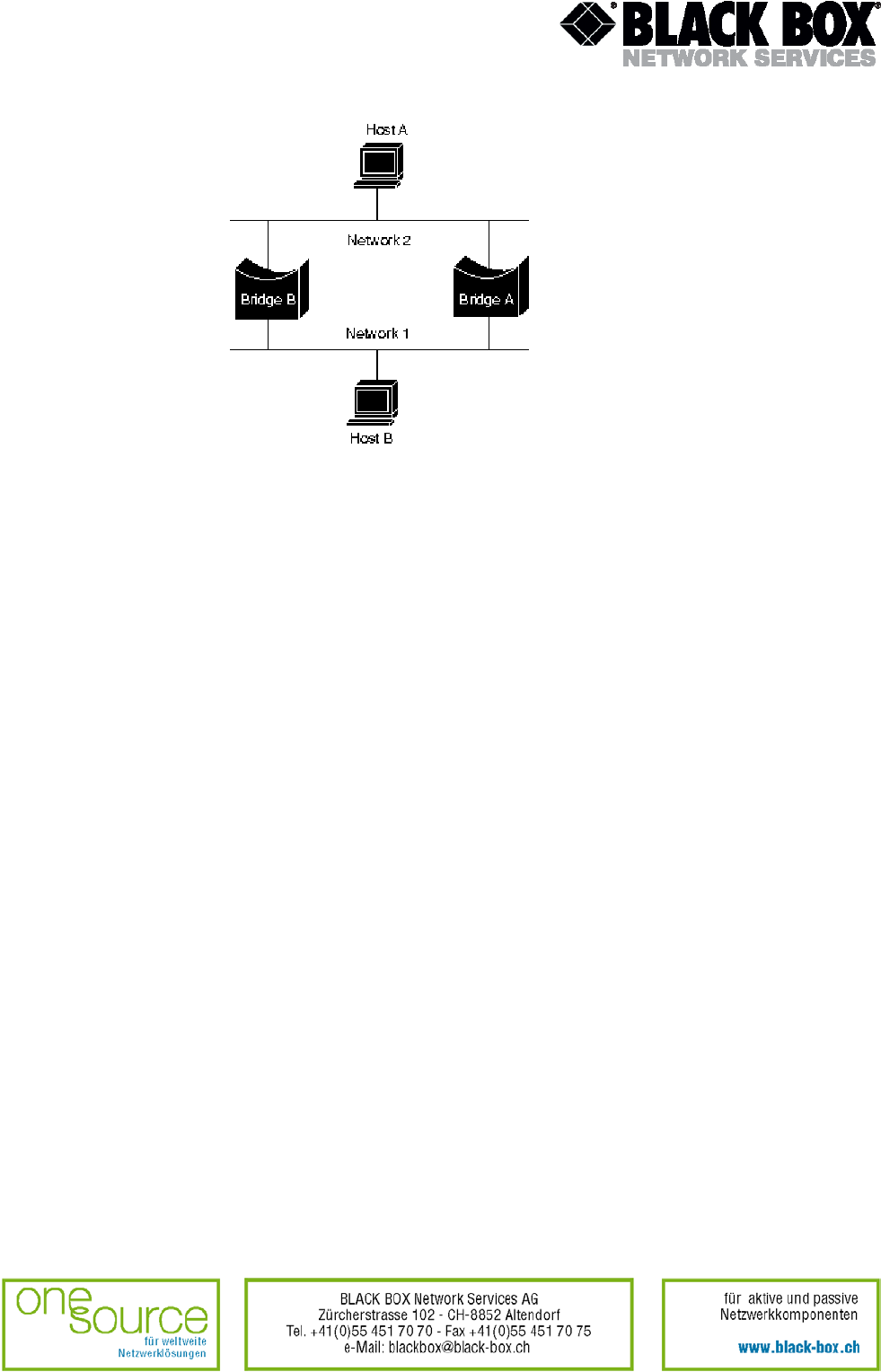
Fig.3 Network with loops
Suppose that host A sends an information unit to host B. Both bridges receive this information
unit and conclude that host A belongs to network 2. Unfortunately, after host B receives two
copies of the information unit from host A, both bridges again receive the same information unit
onto their interfaces with network 1, because all hosts receive all messages of broadcast LANs.
In some cases bridges change their internal tables to indicate that host A is on network 1. When
host B rep[lies to the information unit of host A, both bridges will receive and then ignore these
replies, since their tables will indicate that this destination address (host A) is on the same
network segment as the information unit source.
Another disadvantage is cloning (proliferation) of broadcast messages in networks with loops.
Assume that the initial information unit of host A is a broadcast. Both bridges will forward this
information unit endlessly, using the available network bandwidth and blocking the transmission
of other packets on both segments.
To solve the above-described problems there was engineered the spanning tree algorithm (STA).
It preserves the benefits of loops, eliminating their drawbacks. The algorithm was published in the
IEEE 802.1d specification.
The STA designates a loop-free subset of the network's topology by placing those bridge ports
that, if active, would create loops into a standby (blocking) mode. Blocking bridge ports can be
activated in the event of primary link failure, providing a new path through the internetwork. Figs 4
and 5 illustrate how the STA eliminates loops.
Version: 1.0 Page. 23 of 95


















